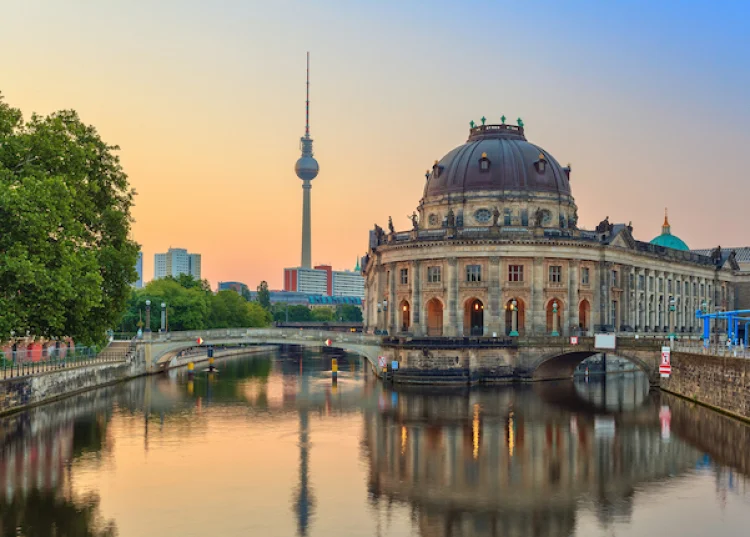The list of World Heritage Sites protected by the United Nations Educational, Scientific and Cultural Organization (UNESCO) includes some of the most important historical landmarks on the planet.
Many of them are found in cities, with places such as Beijing and Córdoba boasting multiple entries. But it’s not alway about having the most sites: other places, such as Rome and Mexico City, pack multitudes of treasures into one single site.
Here are 8 top destinations for checking off some of the best UNESCO locations.

1. Córdoba, Spain
Not Rome, not Paris, nor Beijing – the place with the most World Heritage Sites is Córdoba. The Andalusian city has an incredible four entries on the UNESCO list, starting with the Great Mosque with its sea of orange-and-white striped arches. Then there’s the Historic Centre, which includes the Roman bridge over the Guadalquivir river, and, outside the city, the 1,000-year-old ruined Moorish city of Medina Azahara.
To complete the quartet, you’ll need to visit in May when dozens of historic properties show off their flower-filled patios to the public at the annual UNESCO-protected Patios Festival.

2. Beijing, China
Rivalling Córdoba, the Chinese capital could be said to boast seven entries on the UNESCO list, given that it encompasses parts of various multiple-location sites: the Great Wall, the Grand Canal and the Ming Tombs.
Whether you buy that or not, there’s no denying that it’s a big hitter for historical attractions with the Forbidden City, Temple of Heaven and Summer Palace complexes to tick off. Around 30 miles outside the city, the Zhoukoudian Peking Man Site is the location of an archaeological dig where important ancient human fossils have been discovered.


3. Rome, Italy
For historical sightseeing, there really is no place like Rome. The whole of the city’s Historic Centre forms one giant UNESCO Heritage Site, featuring a catalogue of classical wonders, including – deep breath – the Colosseum, the Forums, the Pantheon, Trajan’s Column, the Circus Maximus, the Terme di Caracalla, the Mausoleum of Augustus, the Mausoleum of Hadrian and the Column of Marcus Aurelius, not to mention key papal religious and public buildings.
Then, right next to it, there’s the Vatican itself, with St Peter’s Basilica, the largest religious building in the world, and countless masterworks, including Michelangelo’s Sistine Chapel frescoes.

4. Mexico City, Mexico
Built upon the ruins of the old Aztec capital of Tenochtitlan by the Spanish invaders, Mexico City has a rich history to explore. The entire Historic Centre around the huge Zócalo central square is a World Heritage Site, encompassing Aztec archaeological sites such as the Templo Mayor, colonial structures such as the Metropolitan Cathedral and the early 20th-century Palacio de las Bellas Artes.
Head 20 miles south of the city to see Xochimilco, part of the same site, whose idyllic canals, artificial islands and floating gardens hark back to a pre-Hispanic past. Back in town, there are two more UNESCO-protected sites to discover: the Universidad Nacional Autónoma de México campus, with its modernist architecture and Diego Rivera murals, and the house and studio of artist Luis Barragán.

5. Moscow, Russia
The Kremlin and Red Square offer a concentration of historical riches that’s hard to beat. Occupying the oldest part of the city, the Kremlin itself has five palaces, four cathedrals, a defensive wall and towers, as well as the Grand Kremlin Palace, home to tsars, presidents and now also a museum.
Alongside it, the Red Square is flanked by the colourful spires of St Basil’s Cathedral, as well as Lenin’s tomb, where the preserved body of the revolutionary leader has been on display since 1924.
In the southeast of the city, another UNESCO Heritage Site, the Church of the Ascension at Kolomenskoye was built in 1532 to celebrate the birth of the future Ivan the Terrible. Over in the southwest, the 15th to 16th-century Novodevichy Convent houses numerous Moscow Baroque-style churches and buildings as well as a cemetery containing the graves of writer Anton Chekhov and ex-Soviet President Nikita Khrushchev.

6. Mumbai, India
First stop is the city’s hectic Chhatrapati Shivaji train terminus, completed in striking Italian Gothic style by British architectural engineer Frederick William Stevens in 1887. Then hop on a boat over to Elephanta Islands to marvel at the cave temples built between the 5th and 7th centuries, many of them dedicated to the Hindu goddess Shiva.
Returning to the mainland, check out the city’s third Heritage Site: the collection of 19th-century Victorian neo-Gothic and 20th-century Art Deco buildings in the Fort precinct, including Mumbai High Court, Rajabai Clock Tower and Eros cinema.
Mumbai is also the capital of Maharashtra state, which is home to two UNESCO-protected ancient cave sites: Ellora and Ajanta.


7. Berlin, Germany
The German capital’s World War Two and Cold War history looms large in the mind of most tourists, but its UNESCO-protected sites reflect a more peaceful past. Museum Island is home to five museums built between 1824 and 1930, offering a stroll through global art history in one handy 8.6-hectare area. Afterwards, stop by the six Berlin Modernism Housing Estates to appreciate the socially progressive architecture of the Weimar Republic.
The Palaces and Parks of Potsdam and Berlin site takes in several glorious green spaces and properties around the city, including Glienicke Park, close to Glienicke Bridge (the famous ‘Bridge of Spies’), and Peacock Island, featuring a castle and nature reserve.

8. Bruges, Belgium
Easily the smallest city on this list, Bruges is nevertheless big on heritage. It’s one of Europe’s best-preserved medieval towns and the entire Gothic centre is one huge UNESCO-protected site. Highlights include its picturesque canals, the restaurant-lined Market Square and the Church of Our Lady, with its towering 115.6m (380ft) brick spire and Michelangelo’s Madonna and Child sculpture.
Meanwhile, its best-known landmark, the 13th-century Belfry of Bruges, forms part of UNESCO’s Belfries of Belgium and France site and its Ten Wijngaerde beguinage – a former residence for lay religious women who lived communally like nuns – is included in the Flemish Béguinages site.

